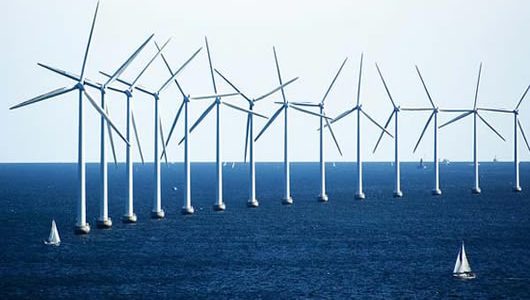| 3 YEAR | 1 semester | 6 CREDITS |
| Roberto VERZICCO – Vincenzo MULONE | since 2019-20 |
| Code: 8037967 SSD: ING-IND/08 |
LEARNING OUTCOMES: This course aims at providing the fundamentals of fluid dynamics applied to fluid machines. More in detail, it deals with the fluid dynamics equations applied to energy-consuming and energy-producing machines, characterized by both axial and radial flows. It also deals with the understanding of systems connected to fluid machines.
KNOWLEDGE AND UNDERSTANDING: The student will be able to develop simple but useful calculations of fluid machines in terms of flow, work and power, along with solving practical problems of interest. The student will also learn the basics of the control of fluid machines with respect to the flow rate, work exchanged and power output or input The knowledge developed will help the student for both the design of fluid machines and of the systems connected to the machines.
APPLYING KNOWLEDGE AND UNDERSTANDING: The student will apply the knowledge and understanding developed to the analysis of practical problems. This would imply critical knowledge in terms of size and power output/input; the same thing will be done for the systems connected to the machine.
MAKING JUDGEMENTS: The student will have to prove his critical awareness with respect to the simplifying assumptions useful to describe and calculate fluid machines, as well as his critical awareness of the correct order of magnitude of performance parameters while dealing or designing fluid machines.
COMMUNICATION SKILLS: The student will prove, mostly during the oral test, his capacity of describing the operation and functioning of fluid machines, convening of the knowledge developed.
LEARNING SKILLS: The student will get familiar with the schematization of practical problems, mostly during the development of his skills for the written test. This mainly concerns fluid machines (e.g. wind turbines, steam turbines, hydraulic turbines, hydraulic pumps, gas compressors, etc) and the systems connected to the machines (e.g. hydraulic power plants, pumping systems, air distribution systems, etc).
DETAILED SYLLABUS
Introduction
Classification of machines. Turbines, compressors, volumetric, rotary machines and their applications to industrial practical cases. Analysis of performance: power, specific work, efficiency.
Basics of fluid mechanics
Material and spatial description of the flow field. Translation, deformation and rotation. Reynolds’ transport theorem. Principles of conservation and balance (mass, momentum, energy, entropy) in differential form. Mass, momentum, thermal and mechanical energy in stationary and rotating frames of reference.
Basics of fluid mechanics applied to turbomachinery
Integral balances in turbomachines (mass, momentum, moment of momentum, energy) and basic applications.
Gas dynamics equations, speed of sound, Mach number. Applications to nozzles in supersonic conditions, normal shock waves.
Velocity diagrams coupled to stator and rotor blades for energy producing and consuming machines. Moment of Momentum balance. Energy transfer and different expressions of the Euler work. Trothalpy, degree of reaction, utilization for a turbine.
Applications
Scaling and similitude: dimensionless parameters, specific speed and diameter, Cordier curve. Scaling and similitude for compressible flow machines.
Axial turbines: stage analysis, flow and loading coefficients, reaction ratio, special cases of 0 and 0.5 reaction ratio designs. Off-design operation and performance maps.
Axial compressors: stage analysis, flow and loading coefficients, reaction ratio. De Haller design criterion and its effect on blade design. Off-design operation and performance maps.
Centrifugal compressors: analysis of velocity diagrams, effect of blade shape on performance maps, stability and efficiency. Slip factor. Vaneless and vaned diffuser. Flow control (variable speed, IGV and throttling).
Centrifugal pumps operation into systems: definition of head and volumetric flow rate. Head-flow rate performance map and effects on velocity diagrams, blade design and efficiency. System head curves for simple and multi-branched open-ended and closed-circuit systems. Friction factor and expression of dimensional friction losses. Flow control by variable speed and throttling.
Cavitation: physical description; effects of system design on cavitation, Net Positive Suction Head, suction specific speed.
TEXTBOOKS AND MATERIAL
S. Korpela. Principles of Turbomachinery, Wiley 2019.
Karassik et al., Pump handbook, McGraw Hill.
Powerpoint slides and videos are available on the MS-team website.

 UNIVERSITA' DEGLI STUDI ROMA "TOR VERGATA"
UNIVERSITA' DEGLI STUDI ROMA "TOR VERGATA"
